
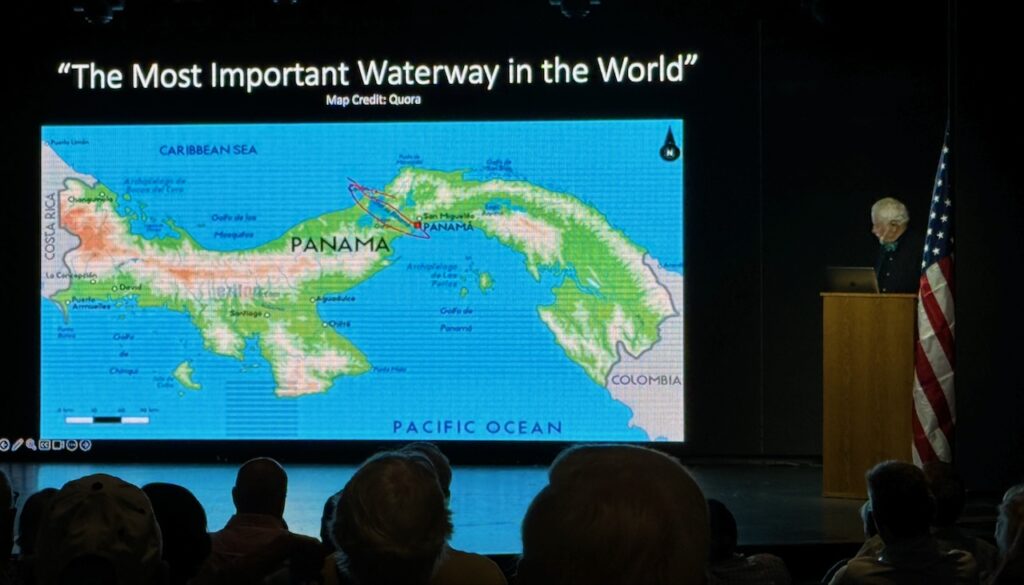
The Panama Canal is considered by many to be one of the modern engineering marvels in the world. We sailed through in it in early 2024 on the Viking Star during Viking Cruise Line‘s Panama Canal and the Pacific Coast Cruise. Before journeying through the canal itself, we attended informative on-board lectures which covered the history and technical details of the canal. The day following our cruise through the canal, My wife Dianne and I were part of a group excursion by train and bus which enabled us to view the canal from land.
Building The Canal
The plans to build this unique waterway originated with the Spanish conquistadors in 1534 when Charles V ordered a survey for a canal. He realized that a passageway across the Isthmus of Panama would eliminate the need for treasure ships from Peru to travel around the tip of South America on the way to Spain. Besides distance issues, sailing around the tip of South America was dangerous because of the rough seas.
Building a canal through Panama would be difficult. The area is mountainous and contains thick jungles. The soil varies in quality and is unstable. The French were not fully aware of these problems when they began to build a canal in 1881. Ferdinand de Lesseps managed the French company behind the construction. He had previously managed the construction of the Suez Canal. Lesseps planned to build a sea level canal. Unfortunately, the topography of the Suez Canal was different from that of the proposed Panama Canal.

The Suez Canal connects two bodies of water that are at the same level. The passage is flat and the weather is consistently dry. Panama is mountainous and has an eight month rainy season. It also had lots of mosquitoes. The French effort was a disaster. They faced numerous mudslides and equipment breakdowns. But their biggest problem was the malaria and yellow fever caused by the mosquitoes. The French never understood the cause of the diseases and numerous workers died. Construction for the most part ended in 1889 after more than 20,000 workers died from disease and accidents.
The United States purchased the rights to build a canal in 1903. Unfortunately Panama was part of Columbia at that time and Columbia’s senate rejected the United States’ plan to construct a canal. Subsequently, a group of Panamanian patriots revolted and declared independence from Columbia. The United States provided military assistance to the rebels. Panama declared its independence from Columbia and the new government signed an aagreement for the United States to build and manage a canal in perpetuity.
The Construction Began Again
The United States officially began construction in 1904 and completed it in 1914. The disease problem was solved after Walter Reed determined that malaria was caused by mosquitoes that could be eradicated by insecticide.
A series of engineers ultimately managed by General George Washington Goethals designed and managed a series of locks and determined the best way to cut through the mountains and the jungle. TheUnited States managed the Canal until 1999 when it was turned over to the government of Panama.
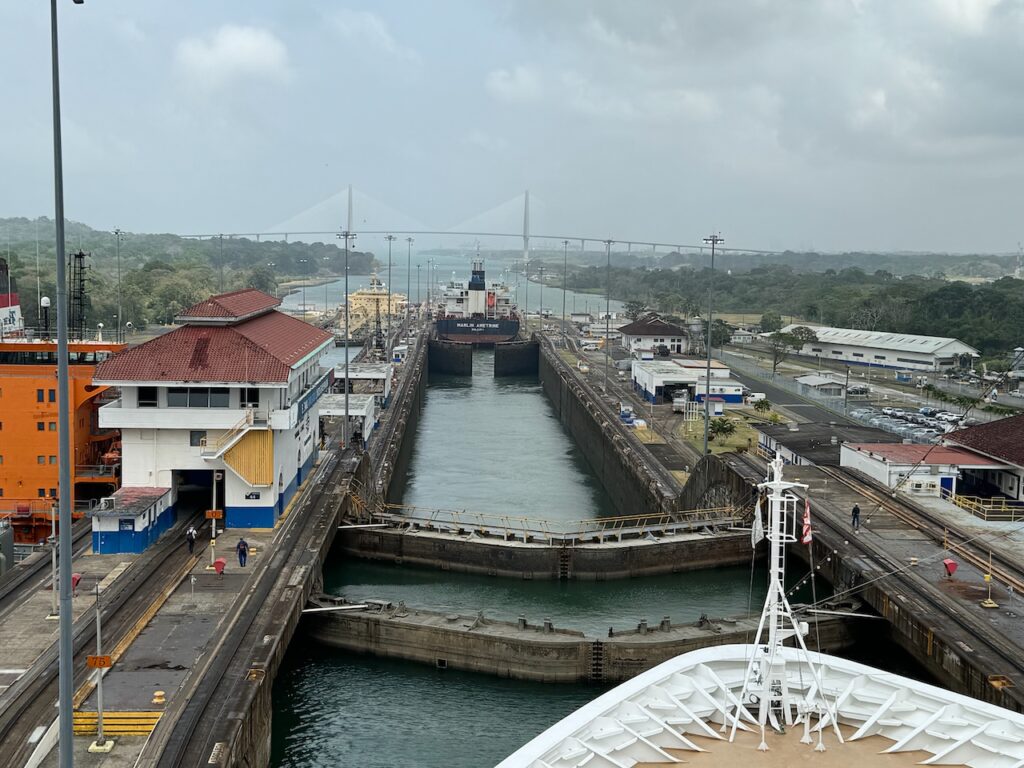
A series of locks were designed to transmit ships through the canal. Ships entering from the Pacific side are first raised up gradually through a series of locks. They are then lowered through another series until they are at sea level with the Atlantic Ocean. Since sea water is corrosive, fresh water must be used to fill the locks. The fresh water is supplied by Gatun Lake one of the world’d largest man-made lakes.
Since Panama has virtually eight months of heavy rain, it was felt that there would never be a problem of having enough water. Unfortunately, several recent years of drought is forcing the canal to begin restricting passage. Some of today’s large cruise ships have been denied passage. But, fortunately the Viking Star is small enough to be granted passage.
Experiencing it First-Hand from The Viking Star
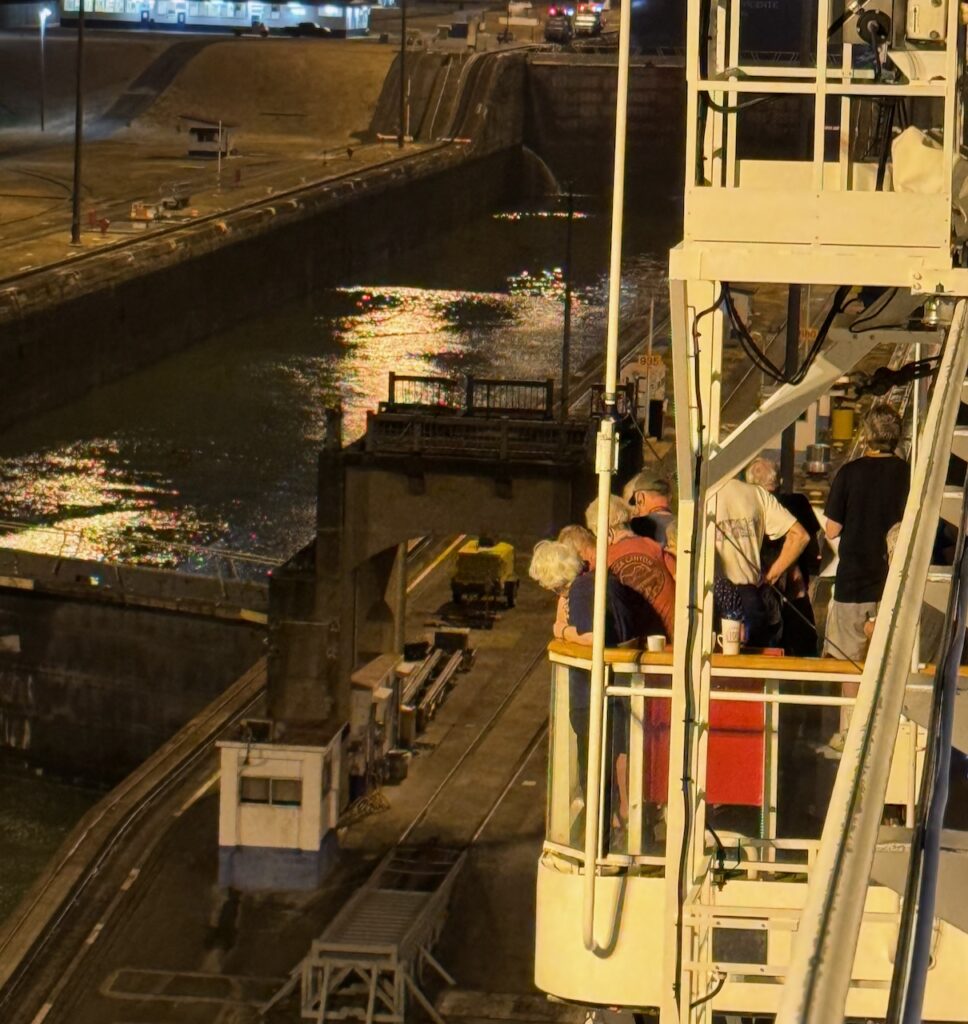
Most of the passengers woke up while it was dark to watch the Viking Star enter the canal from the Pacific Ocean. As the sun rose, we could see the Bridge of the Americas behind the ship. We next entered the Miraflores Locks. Expert commentaries from Viking scholars in residency were broadcast through areas of the ship as we traveled through the Canal.
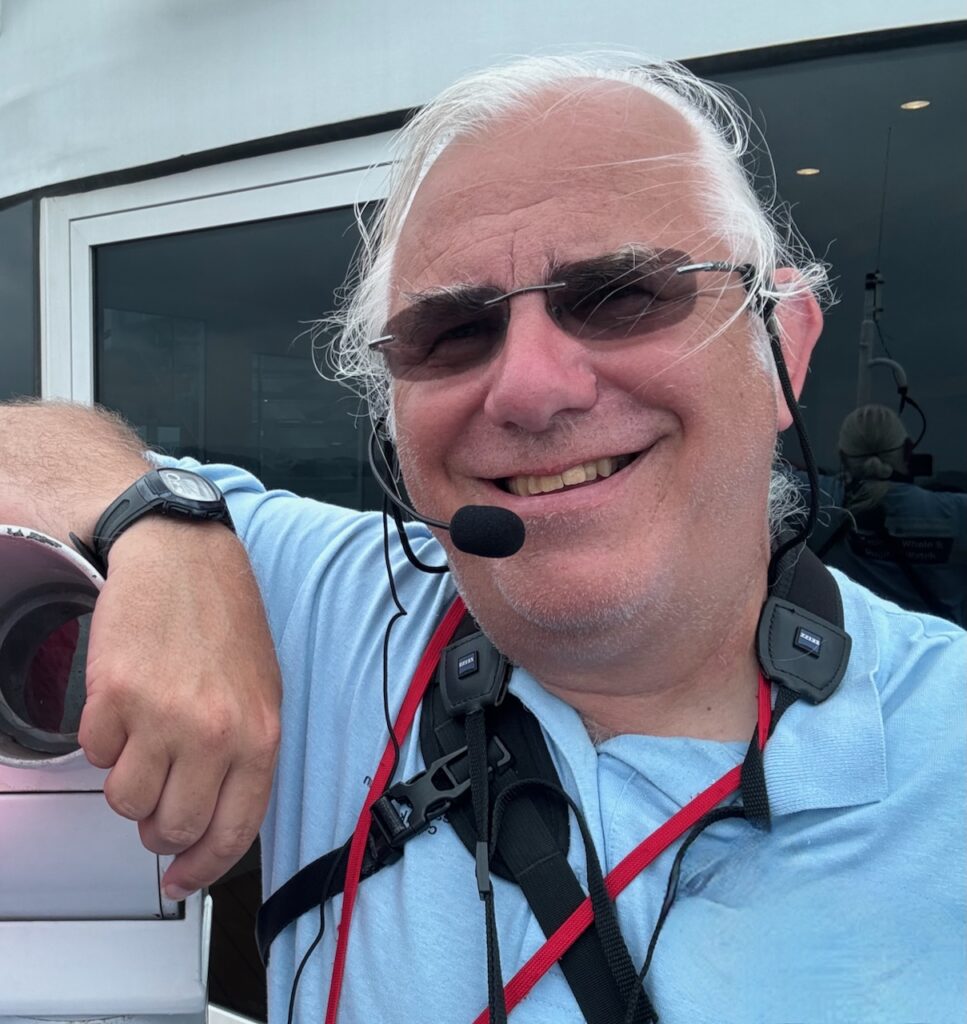
I especially enjoyed commentary by naturist Robin Petch who talked about the animals we would see on both sides of the canal. He pointed out a group on monkeys we passed playing in the trees surrounding the canal.

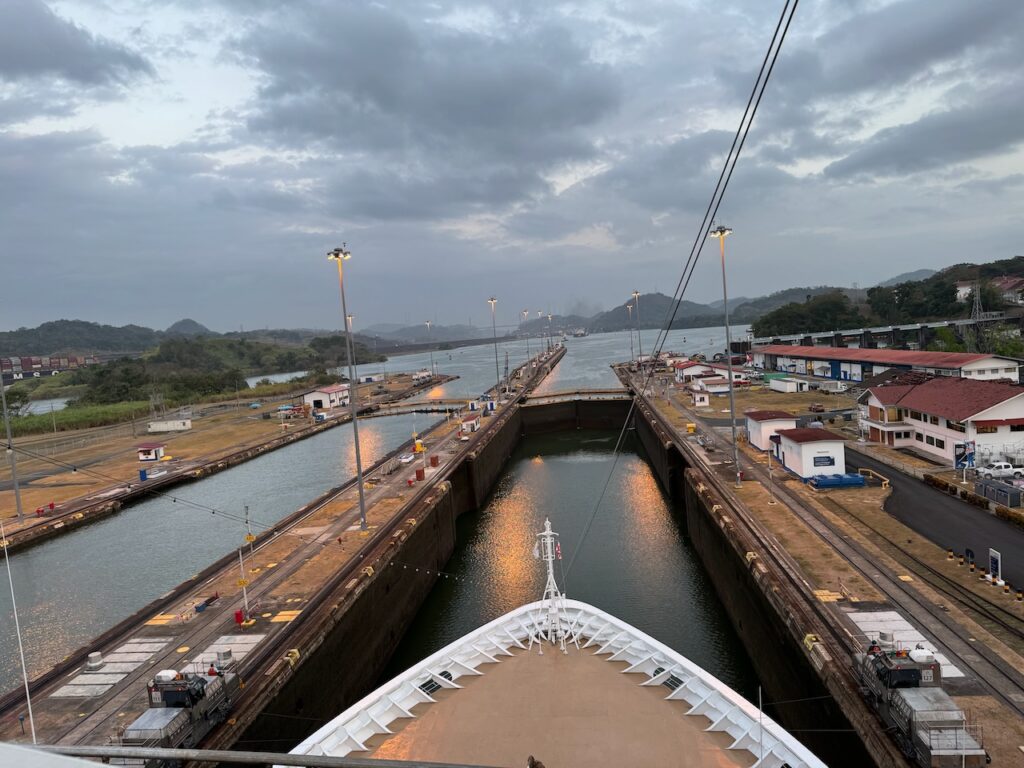
The Viking Star was lifted 85 feet through the locks. It was eventually lowered to sea level. We were able to view several large vessels passing through locks in the opposite direction. It was about 3:00 PM when we exited the canal and docked in Colon, Panama.

The Historic Railway by Domed Train
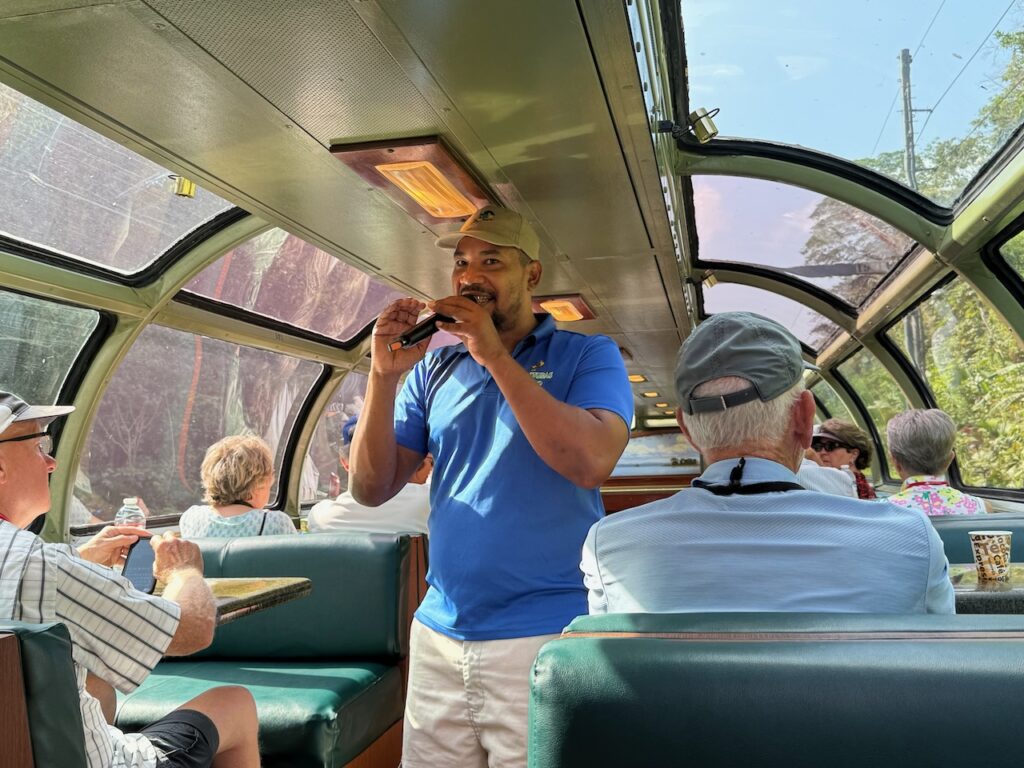
Our time in Panama ended the next day when we took the optional excursion entitled Historic Railway by Domed Train. During our trip in this vintage style rail coach, our guide Raphael shared information about the canal. The one hour comfortable train ride took our group from Colon to Panama City in parallel with the canal including a rain forest.
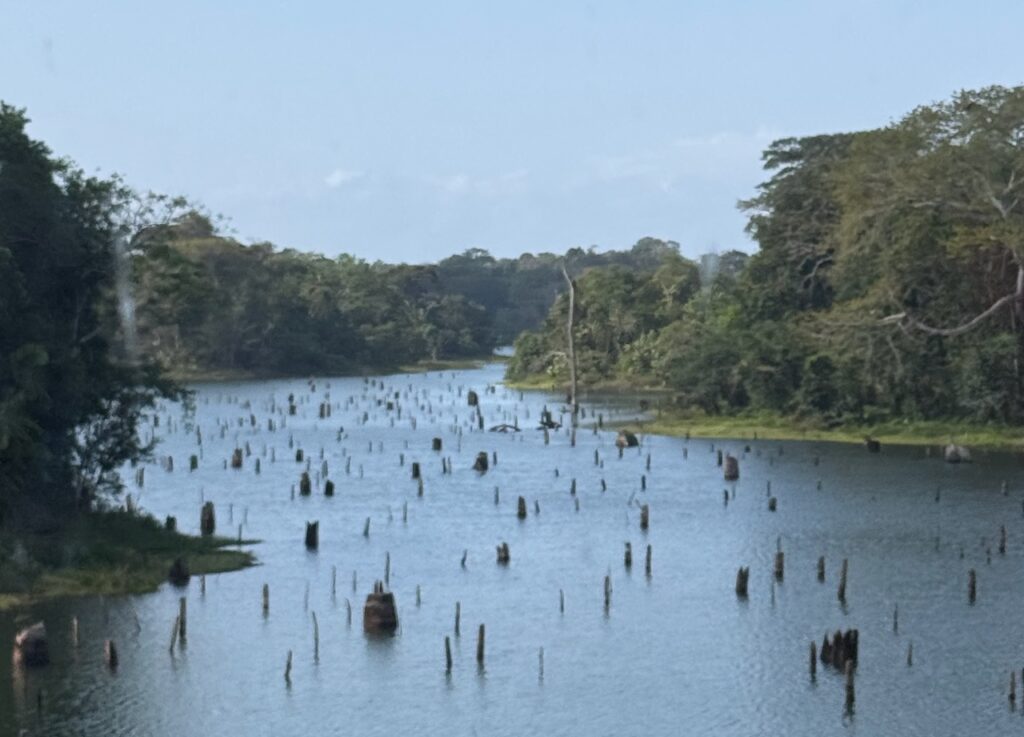
Raphael talked about the recent drought and pointed out the appearance of tree trunks in the shrunken Gatun Lake. He also led us through the Miraflores Visitor Center where he reviewed the engineering aspects of the canal.
We left the visitors center feeling like we had much more of an upstanding of the complexities and importance of the Canal. By hearing pre-canal lectures on board and then traveling through the canal with Viking’s experts, we felt that we had a fuller understanding of the significance of this remarkable engineering feat.
Photos by Dianne Davis or Burt Davis Article by Burt Davis and Dianne Davis

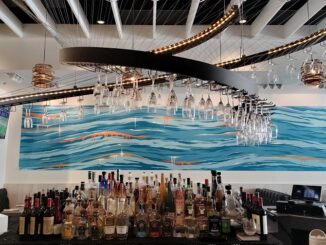


Be the first to comment